
How assumptions and methods of enquiry determine what different schools of psychology can see
Matthijs Cornelissen
last revision: 13 June 2023
[This text originated as an independent article, which is available here.
It still needs to be better adjusted to its new role in Infinity in a Drop.]
Behaviourism phase one: animal experiments
We will start with a diagram showing the universe as seen by the classical behaviourist. It is reassuringly simple: classical behaviourism assumes all we can know scientifically is physical behaviour in a purely physical universe. As far as thoughts, feelings, ideas etc. exist, they cannot be known scientifically and so they are left out from the picture. I've drawn a thick line around the behaviourists' universe to indicate that behaviourists tend to be very clear about what they admit within their researchable universe and what not. What exactly is included differs, however, from one behaviourist to the other. Initially, for Watson, the only thing included was physically observable behaviour. Everything else, including thoughts, feelings, intentions, consciousness, was out. Over time more and more things were permitted within the box, and behaviourism is now sometimes simply defined as the study of everything the individual “does”.
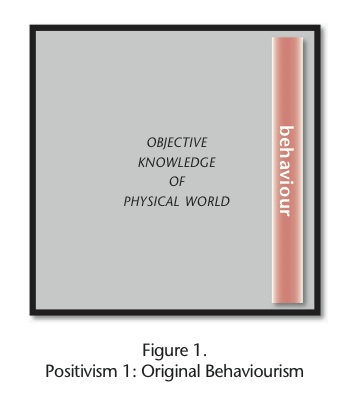
There are a few things that deserve to be noted about behaviourism, even in this very short overview. The first is that it is hard to exaggerate its influence on academic psychology as taught at universities the world over: while until 1913, psychology had been known as the science of consciousness (Güzeldere, 1995), after 1913 it became almost univocally the science of behaviour, and even now, more than 100 years later, it is hard to find an introductory textbook of psychology that does not contain the world “behaviour” in its definition of psychology.
The second is that the positivist philosophy of behaviourism is entirely non-reflexive: it is a “view from nowhere”, as Nagel called it (1986). It distrusts subjective experience and agency on the side of the researcher, and it studies only the behaviour and manipulation of others. There are many difficulties with this. The main one may well be that people don't like to be manipulated or treated as objects. Another one is that it is a denial of the simple fact that we know the world only through our own nature, our own inner “instrument of knowledge”. Pretending that human nature is a perfect instrument of knowledge, and not in need of any further enquiry is unbelievably naïve.
The third point, related to the second, is the dominance of animal studies related to learning and motivation. The most serious problem with this is that the results were generalized to the way children learn. Psychology is the fundamental science on which education is based, and during much of the last hundred years, trainee teachers, the world over, have been steeped in behaviourist psychology. As a result, behaviourist studies of rats have reinforced a system of education that replaces the natural learning of children, which consists of happy, playful attempts at making sense of their existence in the world, by learning of for the child arbitrary, meaningless facts under the pressure of a reinforcement regime that consists of deprivation, punishment and secondary rewards. In other words, children are taught throughout their formative years to do meaningless things in order to obtain “incentives” in an overall climate of deprivation. This is not a minor, innocent error. Though hard to prove and quantify, it must have contributed considerably to the alienation and obsessive production and consumption that threatens to ruin our beautiful planet.1
Behaviourism phase two: Surveys
Given the extreme poverty of the classical behaviourist's universe, an expansion was needed, and it was found in the form of self-reports that can be measured simply and reliably. In mainstream American psychology, these self-reports typically consist of Likert scales: lists of carefully selected statements, on which the subject can indicate to what degree he agrees or disagrees with them. It is understandable why such scales are attractive to psychologists: tick-marking a Likert scale is a unique form of behaviour that can easily and unambiguously be measured quantitatively, while it still has a link to more subtle psychological concepts like attitudes, traits, intentions, ideas etc.
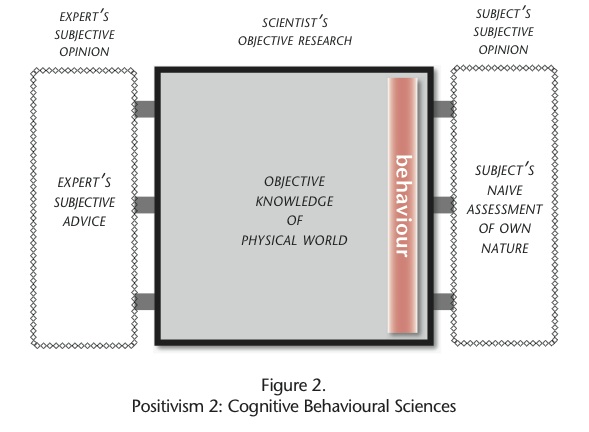
Comparison with astronomy may make clearer why surveys are unlikely to take psychology much further. In astronomy, progress is made by providing a small number of exceptionally gifted and highly trained professionals with the best instruments society can afford, and the rest of us simply believes whatever they find. If mainstream, behaviourist psychologists had been in charge of this field, they might have argued that the findings of these astronomers have little interest or validity for the rest of us. They might have argued that their numbers are too small, and that their observations could be freak phenomena that cannot be verified, and that to get reliable data, we should instead administer questionnaires to representative sections of the world population and find out what these representative members of the general public see in the evening sky, as, after all, that is the sky that matters to them. Ignoring the numerically irrelevant astronomers, they might have studied whether there are statistically significant differences between the observations of city-dwellers, farmers and people living in the mountains.
One could look at Infinity in a Drop as an attempt to explore what happens when one does the opposite, when one follows the astronomers' lead for psychology, and makes use of what a small number of gifted, well-trained and psychologically well-equipped specialists have to say about what happens in the human mind and spirit.
There are many problems with this kind of “quantitative” studies, but, as Figure 2 shows, there can be no doubt that they have expanded the psychologist's universe considerably. It may be noted that the scientist still considers his work to take place within the confines of positivism, as he limits himself to data he finds in the physical reality under his purview, and as he uses sophisticated techniques to measure and process them. Subjective judgments have, however, crept in from two sides. First, he has used either his own judgment or the subjective advice of subjectively chosen experts to create and validate the items in his scales. And second, his “objective” data now include reports produced by his subjects, who in their turn use naïve, unskilled introspection to generate these data. In other words, he has allowed entry to subjective judgment, but by two rather dubious, half-lit routes. The one we have depicted on the right is perhaps the most serious as the self-reports from the research-subjects are based on introspection while introspection is notoriously inaccurate. To compensate for the inaccuracy of individual reports, and of course to account for the large variety that is commonly found in psychological phenomena, psychologists typically use sophisticated statistical techniques to study relatively large “sample sizes”. The problem with this approach is, that even the most sophisticated level of processing cannot go much beyond the quality of the original data, and as a result, this kind of studies is not suitable for the discovery of new insights into the deeper, underlying psychological processes that determine what happens on the surface of our minds. All they can provide are insights into the geographical and social distribution of in itself low quality, naïve self-reports; in other words, what they provide is a sophisticated analysis of what ordinary people think about themselves.
Social constructionism and qualitative research
With the introduction of social constructionism, the world of psychology suddenly becomes considerably more complex. It is grounded in the idea that the researcher's social background has an inescapable influence on the findings he collects. As a result, the researcher becomes an acknowledged part of the research process and begins to be “problematized”. Constructionism is part of a more general trend to humanise the social sciences. It provides less scope for the treatment of “subjects” as if they were “objects”, and it facilitates a greater respect for alternate viewpoints, engendering social tolerance and cultural variety. One of the most valuable contributions of social constructionism is Piaget's cognitive constructivism: the realisation that children don't learn by simply “imbibing” prefabricated knowledge, but that they actively create their own knowledge through a complex creative process that needs to be respected and nurtured.
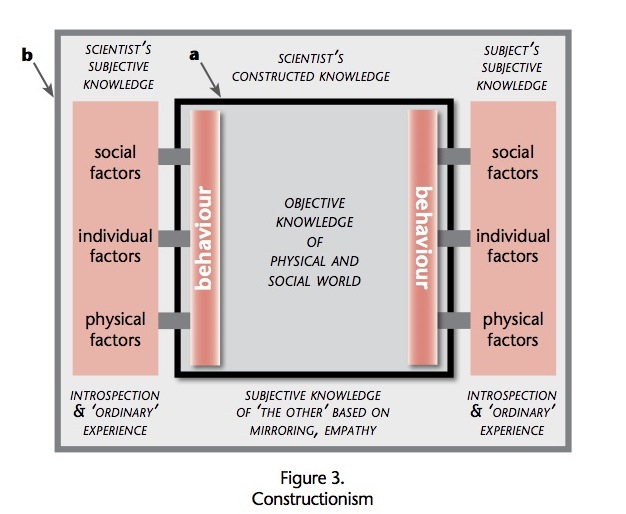
In this again highly simplified diagram, [a] delimits the outer physical world that can be studied with the help of our physical senses, reason, mathematics and whatever physical or mental instruments we can conceive, while [b] indicates the outer borders of the Social Constructionist's world. Subjectivity and experience are no longer shunned but acknowledged both on the side of the subject and the researcher. Clearly this deserves to be considered an enormous and valuable improvement over the simplistic world of behaviourism we started with.
Constructionism has spawned a whole range of new research methodologies that are often bundled together under the banner of “qualitative research”. Methods like narrative analysis, grounded theory and cooperative enquiry are all valuable extensions of our psychological repertoire.
Still, all is not fine with constructionism.
The first problem is that constructions need a foundation, and constructionism seems to have no clue on where this foundation could possibly be found. As its opponents, and even some of its supporters have argued, if one applies constructionism to the scientific knowledge-generating enterprise itself and takes it to its logical conclusion, then everything you can get away with amongst your colleagues should be considered true (see Feiernabend 1975, quoted in Skinner 1985). Even before constructionism came up, it was often argued that in the end “consensus” amongst experts was the ultimate yardstick of science, but consensus is a risky criterion: within Nazi Germany there was an overwhelming consensus approving its racist theories, so, would these theories have been true if Germany had won WWII? Or to go further back, was the earth really flat when people believed that it was? The idea may be attractive to some, just as one could argue in favour of a public survey approach to astronomy, but still, relativism and trust in consensus don't seem to tell the whole story and it is not surprising that constructionism has encountered much opposition and even ridicule from the hard sciences. It is good to be aware of the power stuctures in which knowledge is embedded, and it is good to acknowledge the dangers of dogmatic “essentialism”, but still. While it can be admitted that all human knowledge systems are at least partially humanly constructed, they are also built on something. For the hard sciences that something is not too difficult to agree upon – both physically observable phenomena and mathematics have something “inevitable” about them -- but what that something could possibly be for psychology has till now escaped. The Indian tradition has found an interesting solution to this problem that allows one to escape from excessive relativism as well as from dogmatism. It states that there actually is one ultimate Truth, but that this Truth is intrinsically, and inevitably ineffable: there is in principle no single best way to express it. As a result, it is to be accepted, even celebrated, that different people express it differently.2 The value of this approach can only be appreciated if one realises that it comes from a cultural context in which several effective and logically convincing methods were available to increase the quality of one's approximations to that Truth. It is the combination of admitting ignorance and effective methods to decrease the degree of one's ignorance that provides hope for increasingly accurate approximations, while still respecting others for their views, however different they may be from our own.
There is another shortcoming of social constructionism in its present avatar and this is that it is still too limited to the “ordinary waking consciousness”, or OWC. From an Indian perspective, we could say that while constructionism has accepted the need to problematize the researcher's own knowledge-generating processes, its doubts and self-enquiries have not gone deep enough. They remain limited to the socio-political environment of the researcher but do not question the primacy of the sense-based ordinary waking consciousness that generates that socio-physical reality. Even in research about the effects of meditation, for example, the researchers normally don't leave their own OWC to do the research. There is hardly any research in which the pursuit of knowledge itself takes place within a state of meditation.3 In the very few cases where alternatives on the side of the researcher are attempted, things tend to become flaky. The reason for this is that there are no clear criteria on how to make these alternate knowledge generating and expressive processes more accurate.
If we are permitted once more a reference to the metaphor of astronomy, one could say that the result of all this is, that our present OWC-centred psychology is still as limited as medieval earth-centred astronomy was before Galileo and Copernicus.
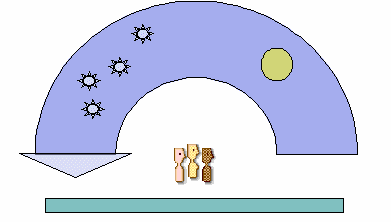
Figure 3a. Mainstream psychology inhabits a Ptolemaic universe:
everything turns around the Ordinary Waking Consciousness
Or to say it differently, constructionism is, till now, still a flatlanders' world. It recognises that there are different viewpoints, but they are all still within one single plane.

Figure 3b. Social Constructionism is aware that there are many viewpoints,
but they all belong to the same plane: it is still a Flatlanders' world
The third problem, related to the two previous points, is that constructionism and qualitative methods as used till now are still exceedingly unlikely to produce any really new knowledge in the psychological field. The reason is that these qualitative methods, even at their very best, cannot go beyond what the referents have to tell about themselves. In other words, at their best they can without distortion report on what sensitive members of the public already know about themselves, but they cannot go much further than that. For almost all purposes this is far better than mass-scale “quantitative research”, which by its insistence on looking at the averages of large populations is -- in a most literal sense – doomed to mediocrity. But still, it does not rise beyond what intelligent lay people already know. In short, 100 years after psychology fell into the abysses of radical and methodological behaviourism, it has finally, and with tremendous effort, climbed back to normal. The real climb has still to start.
Psychoanalysis
Psychoanalysis, starting off at roughly the same time as behaviourism, was the first major school of psychology to question the self-sufficiency of what is available to us in the ordinary waking consciousness. In the famous metaphor of the iceberg, Freud argued that most of what happens in our mind is happening below the surface and not immediately accessible to our surface awareness. He also realised that the therapist has to undergo his own therapy before he can safely help his patients, leading, long before the constructionists, to a somewhat symmetric diagram of the knowable universe.
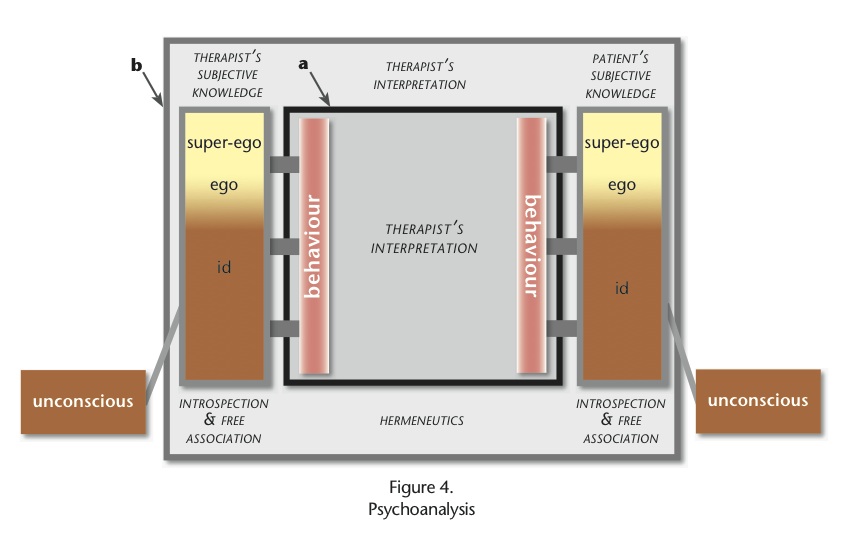
All this is to the good, and yet, again, it is not good enough. From the standpoint of Indian psychology, it begins in the right direction, but then ends up in a perhaps even more serious quagmire than behaviourism. From an Indian psychology perspective there are three main difficulties with classical psychoanalysis: Its knowledge of the terrain outside the OWC is almost unbelievably limited – containing in fact no more than one exceedingly dark little corner; it has no convincing method to make its interpretations reliable and trustworthy; and it generalises, like behaviourism, the little knowledge it has, way beyond its legitimate limits. The core of the three is the second, the lack of an effective and reliable method to explore the territory outside the OWC.
Endnotes
1For a more detailed account, see the Appendix called, Is schooling injurious to health?.
2Ekam sad; vipra bahudha vadanti, while Truth is One, the wise describe it in different ways. I.164.46 of the Ṛg Veda.
3A notable exception is the excellent first article by Claire Petitmengin-Peugeot in the Journal of Consciousness Studies (1999) where she explains that to understand how “psychics” operate, one has to get into their state of mind.
References
Güzeldere, Güven, (1995). "Consciousness, what it is, how to study it, what to learn from its history" Journal of Consciousness Studies, 2(1), 30-51.
Nagel, T (1986). The View from Nowhere. Oxford: Oxford University Press.
To receive info on
Indian Psychology and the IPI website,
please enter your name, email, etc.